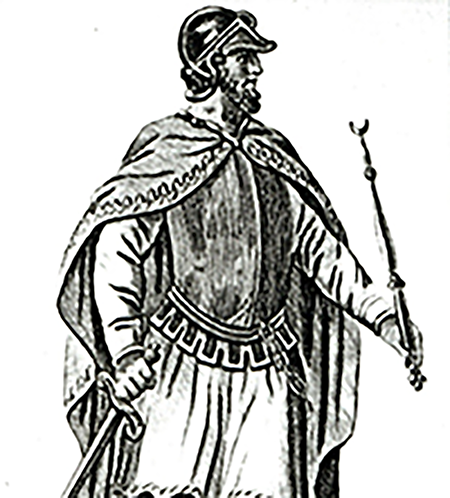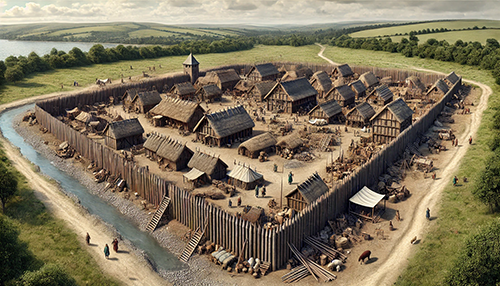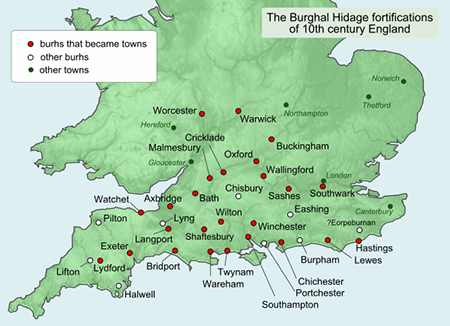



King Edward the Elder Quick Stats





Born: c. 874877
Died: 17 July 924, at Farndon, Cheshire
Mother: Queen Ealhswith
Father: King Alfred the Great
Wife(s):
Ecgwynn
Ęlfflęd
Eadgifu
Children:
Ęthelstan (later King of England)
Edmund
Eadred
Eadgifu
Ęlfweard
Several others, many of whom were daughters who married into European noble families.
Successor: Ęthelstan (his son)
Predecessor: Alfred the Great (his father)
Died: 17 July 924, at Farndon, Cheshire
Mother: Queen Ealhswith
Father: King Alfred the Great
Wife(s):
Ecgwynn
Ęlfflęd
Eadgifu
Children:
Ęthelstan (later King of England)
Edmund
Eadred
Eadgifu
Ęlfweard
Several others, many of whom were daughters who married into European noble families.
Successor: Ęthelstan (his son)
Predecessor: Alfred the Great (his father)
Edwards strategy often involved the construction of new burhs in strategic locations. These fortified towns not only provided protection but also served as administrative centers, facilitating the integration of conquered territories into the kingdom. Edward established numerous burhs across reconquered lands, ensuring the stability and defense of his expanding realm. These efforts were complemented by Ęthelflęds parallel campaigns in Mercia, where she captured critical Viking strongholds such as Derby and Leicester.

A depiction of an Anglo-Saxon burh town. It features wooden palisades to fortify the town.
Edwards ambitions extended beyond Mercia and Wessex. By the later years of his reign, he had brought much of East Anglia and parts of Northumbria under his control. His campaigns were marked by both military force and diplomacy, as he secured the submission of local rulers and established his authority over vast territories. By 920, Edward was recognized as overlord by rulers in Scotland, Wales, and parts of the Danelaw, a testament to his growing influence and the strength of his leadership.

A map of burhs named in the 10th-century Burghal Hidage.
Edward the Elders legacy is often overlooked, but his contributions were vital to the unification of England. His military campaigns, administrative reforms, and consolidation of territories laid the groundwork for his son Ęthelstan to build a truly united English kingdom. Edwards ability to expand and secure his kingdom during a time of constant Viking threat is a testament to his leadership and vision. Though he did not enjoy the same level of fame as his father Alfred or his son Ęthelstan, Edward the Elder deserves recognition as one of the architects of Englands medieval success. His reign was a bridge between the survival of Wessex under Alfred and the unification of England under Ęthelstan, making him a central figure in the history of Anglo-Saxon England.
King Edward the Elder: The Builder of a United England
King Edward the Elder, born around 874 AD, was the son of Alfred the Great and Ealhswith of Mercia. His reign from 899 to 924 AD marked a critical phase in the unification of Anglo-Saxon England. Edward's military campaigns, administrative reforms, and strategic alliances were instrumental in expanding Wessex's influence and consolidating territories into what would become a unified English kingdom. Though often overshadowed by his father and his son Ęthelstan, Edwards accomplishments were foundational to Englands development.
Edwards early life was shaped by the challenges of Viking invasions and the transformative reign of his father, Alfred. Growing up in a time of turmoil, Edward received both military training and an education that emphasized governance and piety. His close relationship with his father prepared him for leadership in a kingdom constantly under threat. When Alfred died in 899, Edward ascended the throne, but his early reign was immediately tested by a succession dispute. His cousin Ęthelwold, son of Alfreds older brother Ęthelred I, contested Edwards claim, seeking to rally Viking support against him. This rebellion culminated in the Battle of the Holme in 902, where Edward emerged victorious, though at great cost. With Ęthelwolds death, Edward secured his position as king, allowing him to focus on the broader threats to Wessex.
One of Edwards defining achievements was his series of military campaigns against Viking-controlled territories in England. He inherited from Alfred a kingdom fortified by burhs (fortified towns) and a robust defensive strategy, but Edwards ambitions extended beyond mere defense. His goal was the reconquest of lands held by the Danelaw, the Viking-controlled regions in the north and east of England. Edwards campaigns were both methodical and relentless, relying on the construction and use of fortified settlements to secure newly conquered territories.
In 910, Edward launched a decisive campaign against the Northumbrian Vikings in alliance with Ęthelflęd, his sister and ruler of Mercia. Together, they achieved a major victory at the Battle of Tettenhall, a turning point in the struggle against the Danes. The battle not only neutralized a significant Viking threat but also demonstrated the effectiveness of the Anglo-Saxon military strategy. Following this success, Edward and Ęthelflęd began a systematic campaign to reclaim Viking-held lands in the Midlands and the north.
The partnership between Edward and Ęthelflęd was a unique aspect of his reign. While Edward controlled Wessex, Ęthelflęd ruled Mercia with exceptional skill, earning the loyalty of her people and playing a crucial role in the expansion of Anglo-Saxon control. After Ęthelflęds death in 918, Edward moved to assert direct control over Mercia, uniting it with Wessex. This unification marked a significant step toward the creation of a single English kingdom.
In addition to his military achievements, Edwards reign was characterized by significant administrative developments. He continued his fathers efforts to centralize governance and standardize laws across his kingdom. Edwards use of burhs not only strengthened military defense but also enhanced administrative efficiency, creating a network of fortified towns that supported economic growth and political stability. His efforts to standardize coinage further facilitated trade and reinforced his authority throughout his expanding realm.
Edwards reign came to an end in 924, when he died at Farndon-upon-Dee while leading a campaign to suppress a rebellion in Mercia. He was succeeded by his son Ęthelstan, who would go on to become the first true King of England. Edwards death marked the conclusion of a reign that had transformed Wessex from a regional power into the dominant kingdom in England.


